| |||||
| Decades: | |||||
|---|---|---|---|---|---|
The following lists events that happened during 1891 in the Congo Free State .
| |||||
| Decades: | |||||
|---|---|---|---|---|---|
The following lists events that happened during 1891 in the Congo Free State .
| Date | Event |
|---|---|
| The Compagnie du Congo pour le Commerce et l'Industrie (CCCI) joins with a group of English investors to formally create the Compagnie du Katanga , which would defend Belgian interests in Katanga Province against British claims. [1] | |
| American Presbyterian church in Congo founded, precursor of the Presbyterian Community in Congo. | |
| 9 April 1891 | Royal Order of the Lion is established by King Leopold II of Belgium, awarded for services to the Congo. |
| 15 April 1891 | Théophile Wahis replaces Camille Coquilhat as vice governor-general |

The Royal Museum for Central Africa (RMCA), communicating under the name AfricaMuseum since 2018, is an ethnography and natural history museum situated in Tervuren in Flemish Brabant, Belgium, just outside Brussels. It was originally built to showcase King Leopold II's Congo Free State in the International Exposition of 1897.

Albert Thys was a Belgian businessman who was active in the Congo Free State. He gave his name of Thysville to the station of Sona Qongo, currently Mbanza-Ngungu in Bas-Congo.
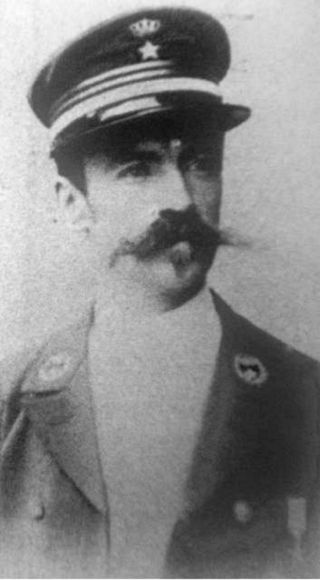
Léon Auguste Théophile Rom (1859–1924) was a Belgian soldier and mid-ranking colonial official, military officer, and commercial agent in the Congo Free State. His reputation for brutality has led some to speculate that Rom served as an inspiration for the character of Mr. Kurtz in Joseph Conrad's 1899 novella Heart of Darkness.
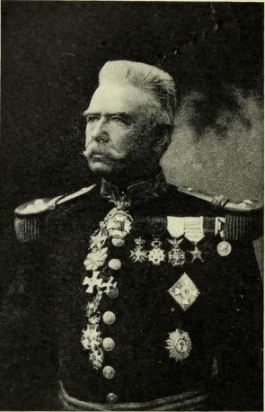
Lieutenant-General Baron Théophile Wahis was a Belgian soldier and colonial civil servant who served as Governor-General of the Congo Free State and, subsequently, the Belgian Congo for two terms between 1891 and 1912. He was the longest ruling of Belgian colonial governors.
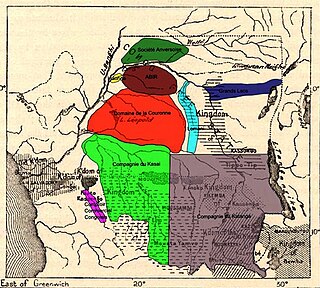
The Société Anversoise was a concession company of the Congo Free State, headquartered in Antwerp. It was, with the Lulonga Company and the Abir Congo Company, one of the main producers of rubber in the Free State. Alongside Abir and the Lulonga Company the Société Anversoise handed back control of the concession to the Congo Free State in 1906. The Société Anversoise merged with Abir in 1911 to form the Compagnie du Congo Belge with a focus of the management of rubber plantations instead of the harvesting of naturally occurring rubber. The Société Anversoise was quoted on the Antwerp Stock Exchange from 27 July 1898.
The Compagnie du Kasai was a Belgian company established to exploit the resources of the Kasai River basin in the Congo Free State. At first it was mainly involved in harvesting wild rubber, but later moved into palm oil and mining.

The Compagnie du Katanga was a concession company of the Congo Free State that engaged in mining in the Katanga Province.

The Société internationale forestière et minière du Congo, known as Forminière, was a lumber and mining company in the Belgian Congo. Founded by Jean Jadot in 1906, the company began diamond mining in Kasai in 1913. At its height, Forminière was involved in gold and silver mining, cotton, palm and rubber cultivation, farming, sawmilling and even owned shops. The Belgian colonial state co-owned 50 percent of the company's capital, the rest being held largely by American shareholders.
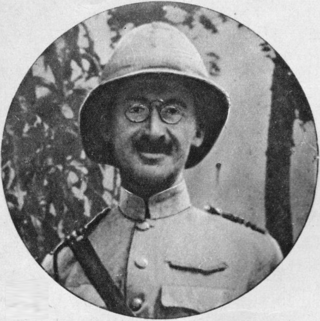
Armand Christophe Huyghé, later knighted Armand Huyghé de Mahenge, was a Belgian career soldier. He is best known for his service in the Belgian Congo during World War I, where he succeeded Charles Tombeur as commander of the Belgian forces in the East African Campaign in 1917. He commanded the Belgian contingent during the Allied occupation of the Rhineland after the war. During World War II, he was involved in the resistance and, after being captured by the Germans, was deported to Buchenwald concentration camp where he died in 1944.
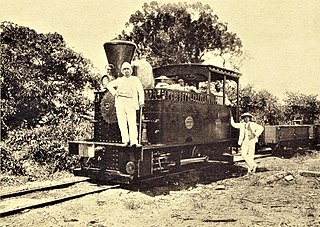
The Compagnie du chemin de fer du Congo supérieur aux Grands Lacs africains was a Belgian railway company established in 1902 in the Congo Free State, later the Belgian Congo, now the Democratic Republic of the Congo. It provided service in the eastern part of the colony south of Stanleyville (Kisangani) to serve the settlers and mining operations in Katanga. It operated a combination of river steamer service along the Lualaba River and railway links where the river was not navigable, including a link to Lake Tanganyika. In 1960 it became the Société congolaise des chemins de fer des Grands Lacs.
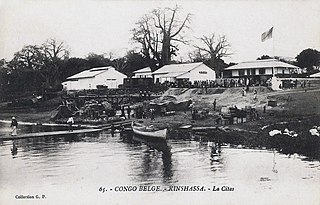
The Compagnie Industrielle et de Transports au Stanley Pool (CITAS) was a Belgian company involved in transport on the Congo River between 1902 and 1955, in what was first the Congo Free State and then the Belgian Congo, today the Democratic Republic of the Congo. The company evolved from owning a shipyard in Léopoldville (now to providing transport services on the Congo, and then to running a port in Léopoldville.

The Compagnie du Congo pour le Commerce et l’Industrie (CCCI) was a private enterprise in the Congo Free State, later the Belgian Congo and then the Democratic Republic of the Congo, whose subsidiaries engaged in a wide range of activities in the Congo between 1887 and 1971. These included railway and river transport, mining, agriculture, banking, trading and so on. It was the largest commercial enterprise in the Congo for many years. It went through various mergers in the years that followed before its successor Finoutremer was liquidated in 2000.
The Société anonyme belge pour le commerce du Haut-Congo (SAB) was a private enterprise in the Congo Free State, later the Belgian Congo, that operated a string of trading stations in the Congo River basin, and exported ivory, rubber and other local products. The ruthless treatment of the local people by SAB agents inspired Joseph Conrad to write his 1899 novel Heart of Darkness.

The Bus Bloc, or Bloc de la Busira-Momboyo, was a huge concession in the Congo Free State, later the Belgian Congo, operated by the Société anonyme belge pour le commerce du Haut-Congo (SAB). It covered land along and between the Busira River and Momboyo River. In the early days the SAB exploited the local people ruthlessly in their demands for rubber, and many died.
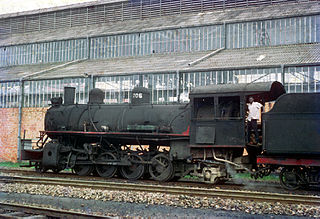
The Compagnie du chemin de fer du bas-Congo au Katanga (BCK) was a railway operator in the Congo Free State, Belgian Congo and later in the Democratic Republic of the Congo and Zaire. Most of the lines were in the southern Katanga Province, with links to the Kasai River for transport of mineral exports down to Kinshasa and onward to the port of Matadi, and a link to the Angolan railway network for transport to Lobito on the Atlantic.
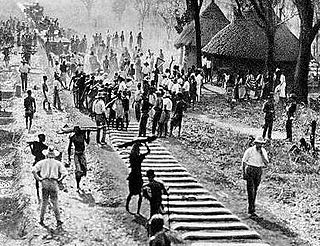
The Compagnie de Chemin de fer du Katanga (CFK) was a railway company in the Congo Free State and Belgian Congo between 1902 and 1952. It held the railway concession that linked the port of Bukama on the navigable section of the Lualaba River through the mining region and the town of Elisabethville (Lubumbashi) to Sakania, where it connected with the Rhodesian railway network. Operations were subcontracted to the Compagnie du chemin de fer du bas-Congo au Katanga (BCK).

The Special Committee of Katanga was a parastatal body created in 1900 by the Congo Free State and the Compagnie du Katanga. At first it was responsible for administering the huge Katanga Province on behalf of the Free State and for exploiting the province's mineral resources. Mineral exploration and mining were soon delegated to separate companies. After the Belgian Congo took over from the Free State in 1908, the CSK handed over its administrative powers to the provincial government. However, as a parastatal it remained responsible for many aspects of development in Katanga until independence in 1960, when it was dissolved.

Tanganyika Concessions Limited was a British mining and railway company founded by the Scottish engineer and entrepreneur Robert Williams in 1899. The purpose was to exploit minerals in Northern Rhodesia and in the Congo Free State. Partly-owned subsidiaries included the Union Minière du Haut-Katanga (UMHK), which undertook mining in the Katanga portion of the copperbelt, and the Benguela railway, which provided a rail link across Angola to the Atlantic Ocean. Belgian banks eventually took over control of the company. The Angolan railway concession was returned to the state of Angola in 2001.
The following lists events that happened during 1901 in the Congo Free State.
The following lists events that happened during 1902 in the Congo Free State.